Bluewater Truk Lagoon Underwater Photo Workshop Trip Report
by Joanna O'Shea
As most divers know, Truk Lagoon is famous for having the best wreck diving in the world. After a week on board the Truk Siren exploring different wrecks each day, I can say that the reputation is definitely well-deserved. In World War II, Truk was a major Japanese logistical base as well as the operating "home" base for the Imperial Japanese Navy's Combined Fleet. In ‘Operation Hailstone’ (February 16–17, 1944) the Americans launched a massive assault and pretty much wiped out the base. Truk is now home to more than 100 wrecked ships, planes and submarines. Most of the wrecks are at relatively shallow depths (some as shallow as 10m/ 33ft), allowing them to be explored by recreational divers.
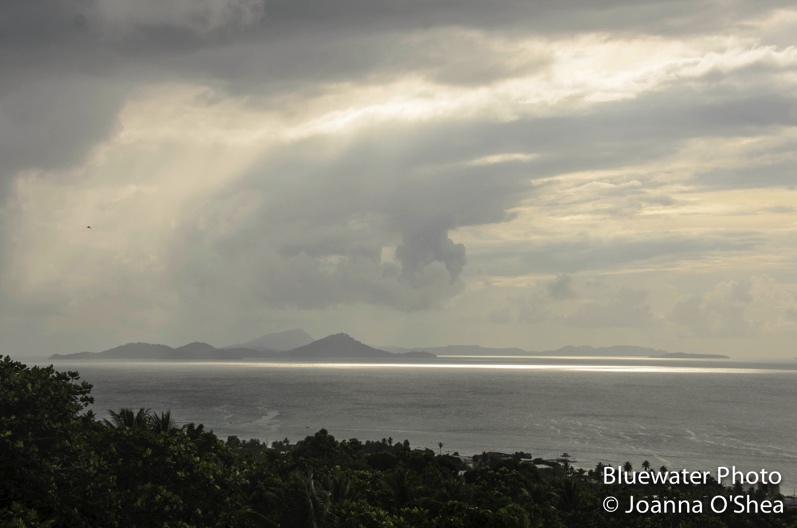
View of Truk Lagoon from a lookout on Weno Island
Fifteen guests (from America, Canada, Australia, Hong Kong, Taiwan and Italy) joined me for Bluewater’s Truk Lagoon workshop on board the Truk Siren, from 15-22 February. The Truk Siren is new to Micronesia, having recently been re-located from the Maldives. But it has an experienced crew who are familiar with Truk’s wrecks, and they gave detailed briefings on each of the sites before we dived them.
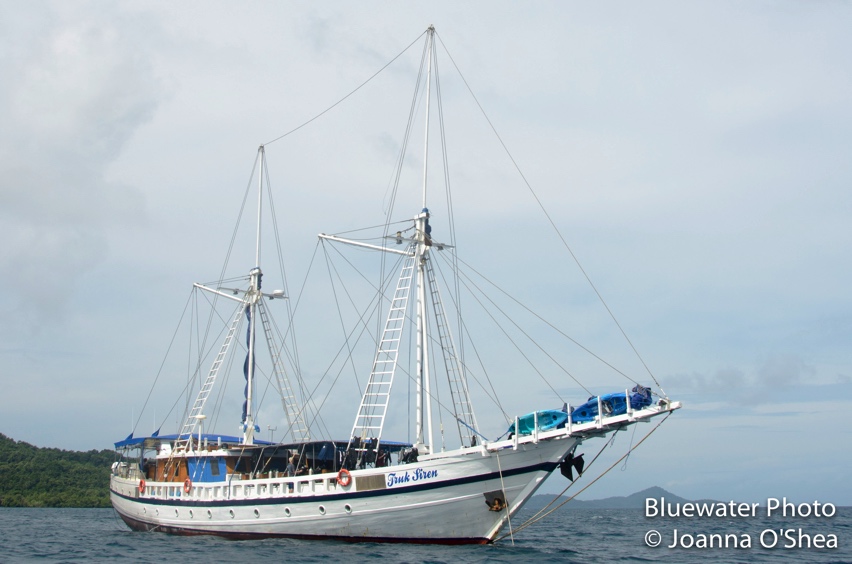
The Truk Siren
Most days we did two morning dives on one wreck, then two afternoon dives on another wreck. Repeat dives on most sites allowed us to split the groups so silt would be minimised when penetrating the wrecks (for example half the group could see the engine room on the first dive, half on the second). With some wrecks pushing the edge of recreational limits, having repeat dives also meant that if you ran out of bottom time to see all the highlights the first dive, you’d have another shot after a surface break.
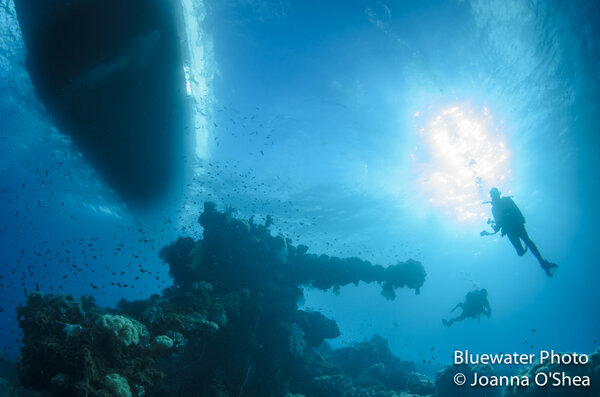
During each day of diving, I conducted a photo seminar on topics including wide angle composition, ambient lighting, shooting silhouettes and sunballs, strobe positioning, macro, and how to shoot behaviour. The guests contributed their best photos each day for the nightly image review on the big TV screen after dinner. I also spent a lot of time helping guests with their photos throughout each day… Lighting was the recurring theme for this trip. Getting the right exposure in minimal ambient light and avoiding backscatter in silted up cargo holds were some of the key challenges faced. I was thrilled to see guests’ photos improve during the trip as they worked out the appropriate settings and spent more time thinking about different ways to shoot their subjects.
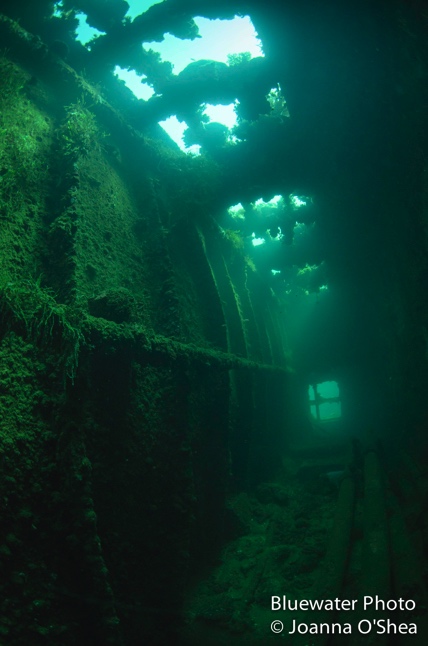
Our check-out dive was on the Heian Maru (depth 12 -34m/39-111ft), one of the largest wrecks in the lagoon. Ambient light shots in wrecks can be difficult to expose properly, especially on deeper dives.
The weather for the trip was calm and warm, although unfortunately there were a few rainy days. Visibility ranged from 10m (33ft) to 25m (81ft), with most dives around 20m (65ft). There was almost no current on any of the dives, which was a nice relaxing change for some guests.
Some of the wrecks were upright, with intact bows and sterns.
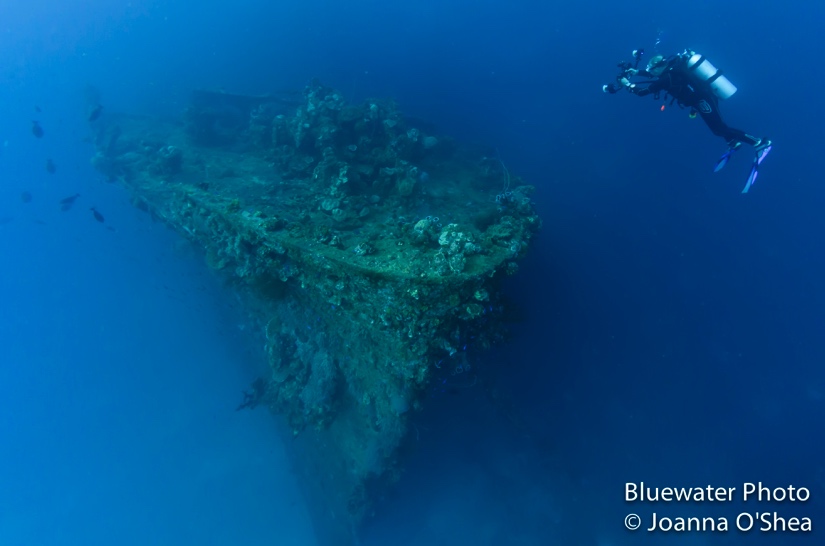
The Nippo Maru (depth 24-47m/78-153ft) is a medium sized freighter.
Some of the wrecks were sideways.
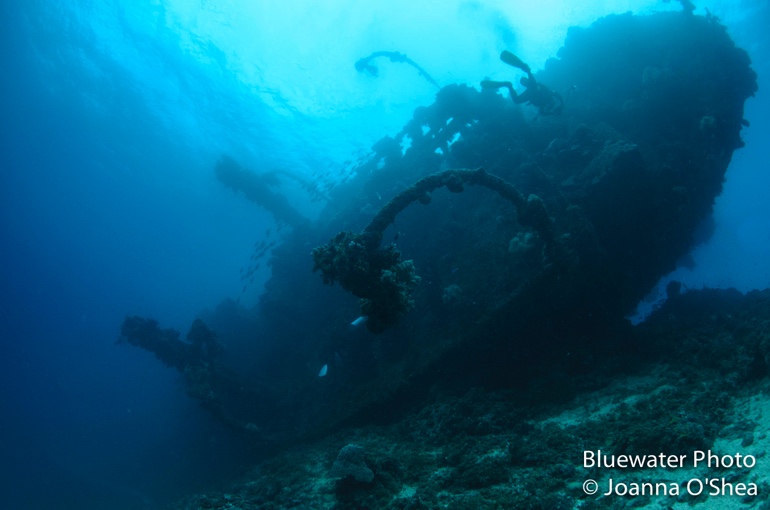
The Gosei Maru (depth: 3-31m/10-101ft) is a coastal freighter lying on her port side.
Many of the wrecks had interesting items on their decks.
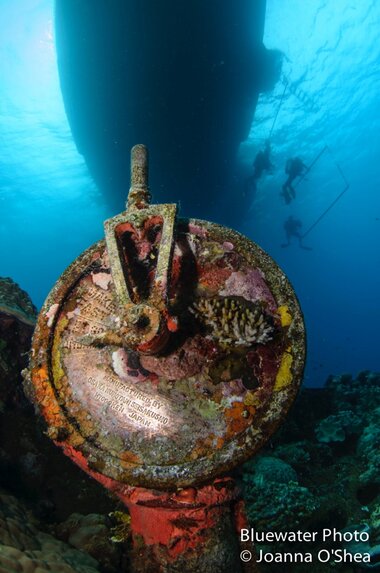
Telegraph on the deck of the Fujikawa Maru (depth: 9-37m/30-120ft) a large 6 hold freighter.
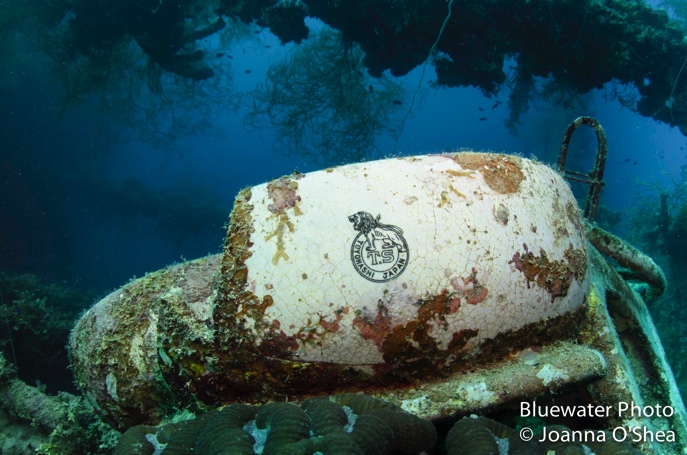
Japanese ceramics on the deck of the Kensho Maru.
Other wrecks had cargo holds full of interesting items.
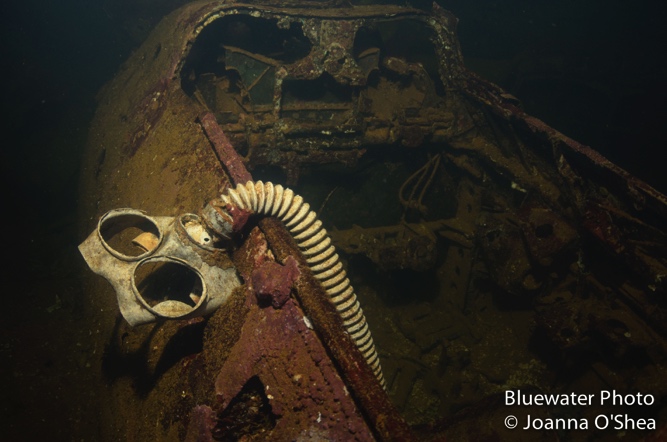
A cargo hold in the Fujikawa Maru was full of Zero planes and gas masks
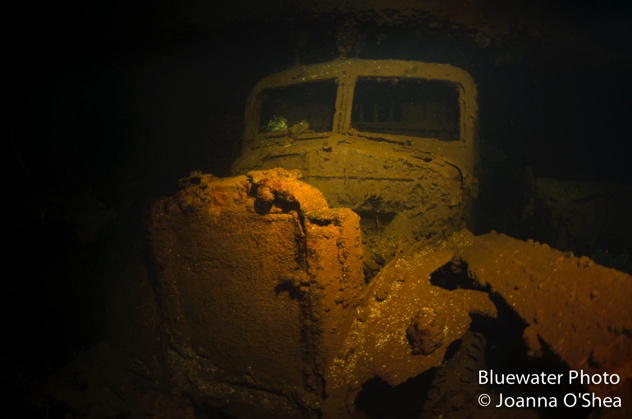
The Hoki Maru (depth: 24-43m/78-140ft) is a medium-large freighter with well preserved trucks, bulldozers and other construction equipment in its aft holds.
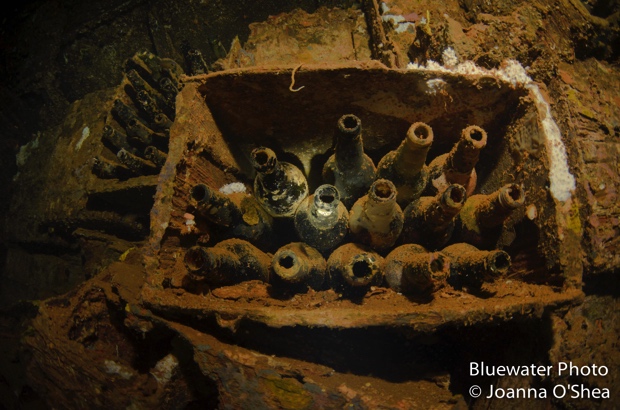
The Rio de Janeiro Maru (depth: 9-39m/30-127ft) is a combined passenger-cargo liner, with cargo holds are full of disassembled 6” guns, shells and many hundreds of beer bottles, some still in crates.
Engine rooms were also fun to explore.
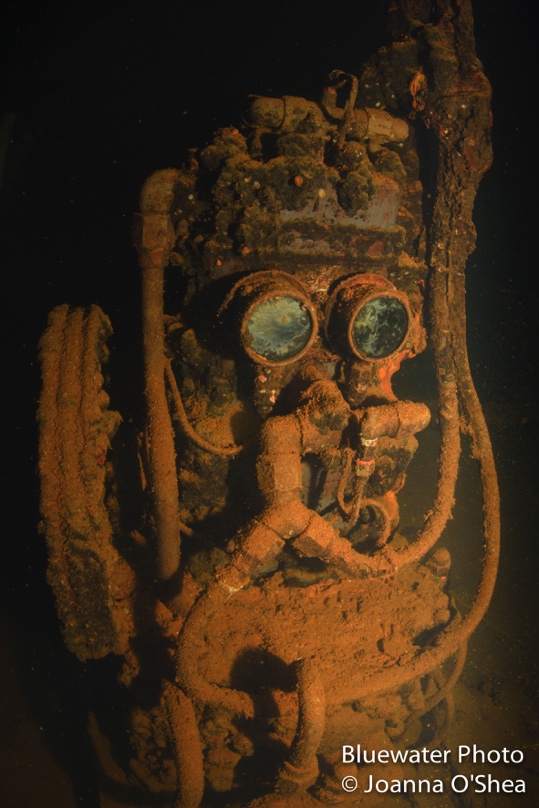
The air compressor in the Fujikawa Maru has been nicknamed R2D2, for obvious reasons.

The Shinkoku Maru (depth: 15-35m/49-114ft) was home to beautiful soft corals, and also had an interesting engine room.
There was plenty of marine life and beautiful soft corals, though much less biodiversity compared to diving in the coral triangle.
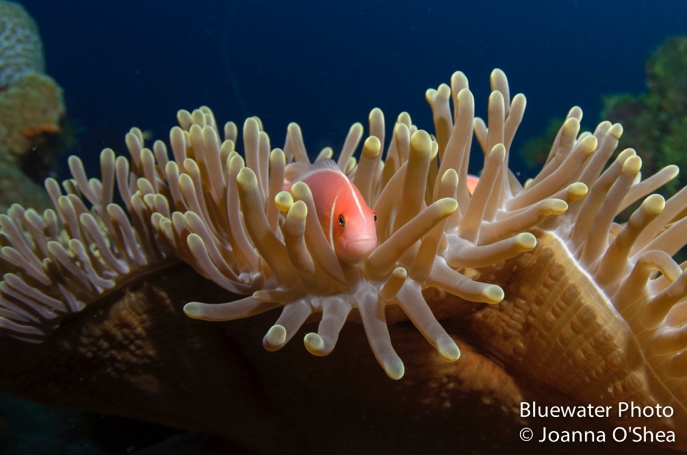
Most wrecks were home to a large number of anemones
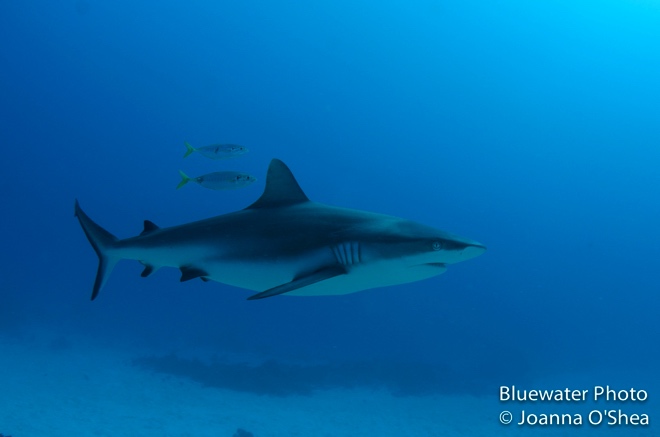
Grey reef sharks patrolled the edges of many wrecks
Night dives offered an opportunity to swap our wide angle lenses for macro, and go searching for critters on the wreck.
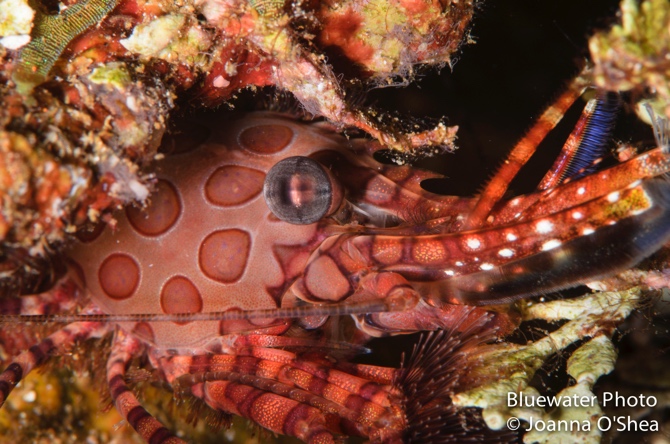
Shrimps were the main critters to see on night dives. This guy was on the Sankisan Maru (depth: 15m-28m/49-91ft)
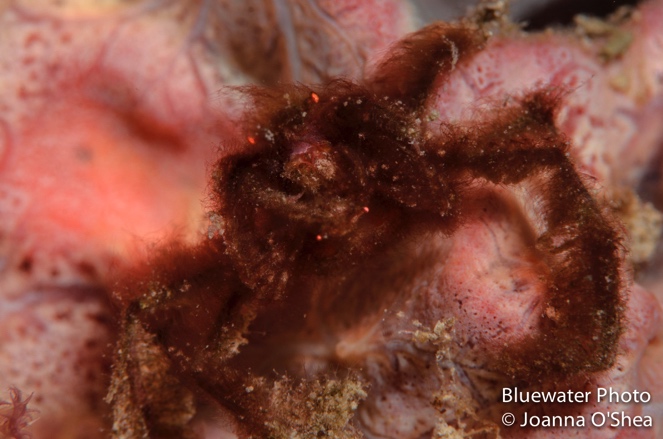
Mating orang-utan crabs were a lucky find on the Shinkoko Maru
Overall it was a fabulous trip. I’d highly recommend Truk to anyone who is into wreck diving or war history. Thanks to the Bluewater guests for being so much fun, and for sharing so many wonderful photos in the image reviews each day.
- Joanna O'Shea
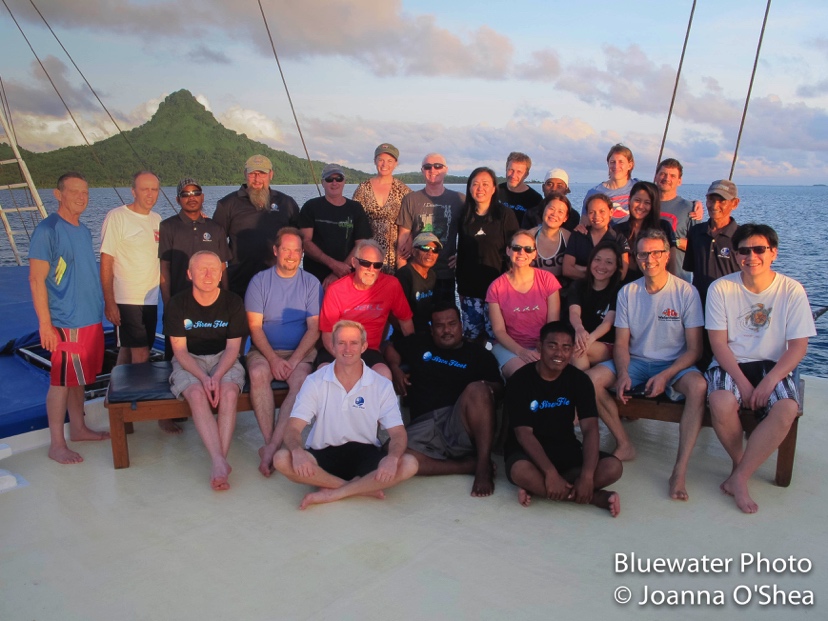
Mating orang-utan crabs were a lucky find on the Shinkoko Maru Huge smiles from everyone on the Bluewater workshop. Thanks for a memorable trip.
How to Book a Trip to Truk Lagoon
Bluewater Travel can book you on a trip to Truk Lagoon diving from a liveaboard or from a resort, for the same cost or less than booking any other way. We know the routes, cabins, rooms and when to go better than anyone else!
Email us at info@bluewaterdivetravel.com to start your adventure.




